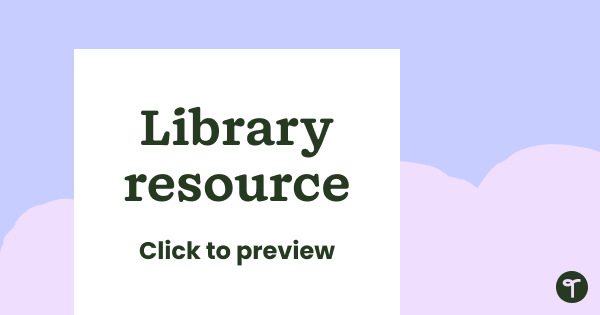ELAR 5.9
Multiple genres: listening, speaking, reading, writing, and thinking using multiple texts--genres. The student recognizes and analyzes genre-specific characteristics, structures, and purposes within and across increasingly complex traditional, contemporary, classical, and diverse texts. The student is expected to:
- (1) demonstrate knowledge of
distinguishing characteristics of well-known children's
literature such as folktales, fables, legends, myths, and tall tales;
- (A) explain the use of sound devices and figurative language and distinguish between the poet and the speaker in poems across a variety of poetic forms;
- (B) explain structure in drama such as character tags, acts, scenes, and stage directions;
- (C) recognize characteristics and structures of informational text, including:
- (D) the central idea with supporting evidence;
- (i) features such as insets, timelines, and sidebars to support understanding; and
- (ii) organizational patterns such as logical order and order of importance;
- (iii) recognize characteristics and structures of argumentative text by:
- (E) identifying the claim;
- (i) explaining how the author has used facts for or against an argument; and
- (ii) identifying the intended audience or reader; and
- (iii) recognize characteristics of multimodal and digital texts.
- Free Plan

Paired Passage Worksheets-Mammals vs. Reptiles
Compare mammals vs. reptiles and add to your reading instruction with leveled nonfiction, compare and contrast passages and worksheets.
- Free Plan

Back to School Today! Poem for Kids
Ease back-to-school jitters and launch your students into a love of poetry with a short poem for kids written just for the first day of school!
- Free Plan

Should Smartphones Be Allowed in Class? Comprehension Worksheets
Decide if cellphones should be allowed in class and boost comprehension skills with a reading passage and comprehension test.
- Plus Plan

Finding the Main Idea in Fiction Texts Interactive Activity
Help your students easily find the main idea and support details in a fiction text with this interactive activity.
- Free Plan

Amelia Earhart Constructed Response Worksheet
Use this passage, second grade writing prompt, and worksheet to help students write a constructed response paragraph about Amelia Earhart.
- Plus Plan

The Olympic Games - Reading Comprehension Task
Encourage students to apply a range of comprehension and writing skills when finding out interesting fun facts about the Olympics with a printable reading comprehension worksheet pack.
- Free Plan

Finding the Main Idea - Graphic Organizer Templates
Teach students how to find the main idea of a text using one of these one-page graphic organizers.
- Plus Plan

Animal Alliteration Activity - Brainstorming Template
Use this brainstorming template when teaching about alliteration.
- Plus Plan

A Thinker Like Me Poem - Comprehension Worksheet
A comprehension worksheet paired with a poem about a thinker.
- Plus Plan

Summarizing Nonfiction Task Cards
Guide students along their summarizing journey with this set of nonfiction texts on task cards for students to summarize.
- Plus Plan

Finding the Main Idea - Comprehension Task (Thunderstorms)
Explore thunderstorms and consolidate knowledge of the main idea and supporting details of a text with this comprehension task.
- Plus Plan

Types of Figurative Language - Worksheet
Practice identifying and creating examples of figurative language with this printable worksheet.
- Plus Plan

Color-Coding Summarizing Nonfiction Text Worksheets
Practice summarizing small nonfiction texts with this fun color-coding set of worksheets.
- Free Plan

Inspirational Woman Profile: Yuna Kim – Comprehension Worksheet
A comprehension task to use when learning about Yuna Kim.
- Plus Plan

Label the Nonfiction Text Features Worksheets
Have your students label text features in nonfiction texts with this set of three differentiation text features worksheets for elementary students.
- Plus Plan

Plant and Animal Adaptations - Comprehension Worksheets
Boost reading comprehension skills with a comprehension passage, with questions, about structural, behavioral and physiological adaptations.
- Plus Plan

Finding The Main Idea - Comprehension Task (Turtles)
A task to use when teaching your students reading comprehension strategies.
- Plus Plan

Comprehension Task Cards - Finding The Main Idea
A set of comprehension task cards to help students find the main idea when reading.
- Plus Plan

Sound Devices in Poetry - Teaching Slide Deck
Teach the different sound devices used in poetry with this Google Slide Deck.
- Plus Plan

Types of Poems - Instructional PowerPoint
A 28 slide editable PowerPoint template the use when introducing students to structured forms of poetry.
- Plus Plan

Checks and Balances - RACES Writing Prompt Worksheet
Practice using the RACES writing strategy and unravel the mysteries of the U.S. Government system of checks and balances with a passage, organizer, and prompt.
- Plus Plan

Onomatopoeia Poster
A poster providing a definition and examples of onomatopoeia.
- Plus Plan

Identifying Descriptive and Figurative Language - Worksheets
A set of 3 worksheets to help your students identify descriptive and figurative language in narrative texts.
- Plus Plan

Poetic Devices PowerPoint
A 23-slide editable PowerPoint template to use when introducing students to poetic devices.
- Plus Plan

Interpreting Figurative Language - Worksheets
Explore figurative language in poetry with this age-appropriate poem and accompanying vocabulary questions.
- Plus Plan

Poetry Analysis Template
A template for students to use when analyzing a poem.
- Plus Plan

Visual Literacy Graphic Organizer
A graphic organizer to use when responding to images during visual literacy activities.
- Plus Plan

How to Summarize Nonfiction Mini Book
Explore the elements needed for a good summary of nonfiction texts with this How to Summarize Nonfiction mini-book.
- Free Plan

Nonfiction Summary Checklist
Give your students a checklist when summarizing nonfiction texts to make sure they include everything required.
- Plus Plan

Main Idea and Details Burger Template
Practice finding the main idea and supporting details of a piece of text with this hamburger template.
- Plus Plan

Finding the Central Idea Worksheet
Read a short article, answer 10 comprehension questions, and use the gathered knowledge to write a central idea sentence about the text.
- Free Plan

Onomatopoeia Words - Vocabulary Display
Display a fun onomatopoeia word wall in your classroom with printable cards containing onomatopoeia examples.